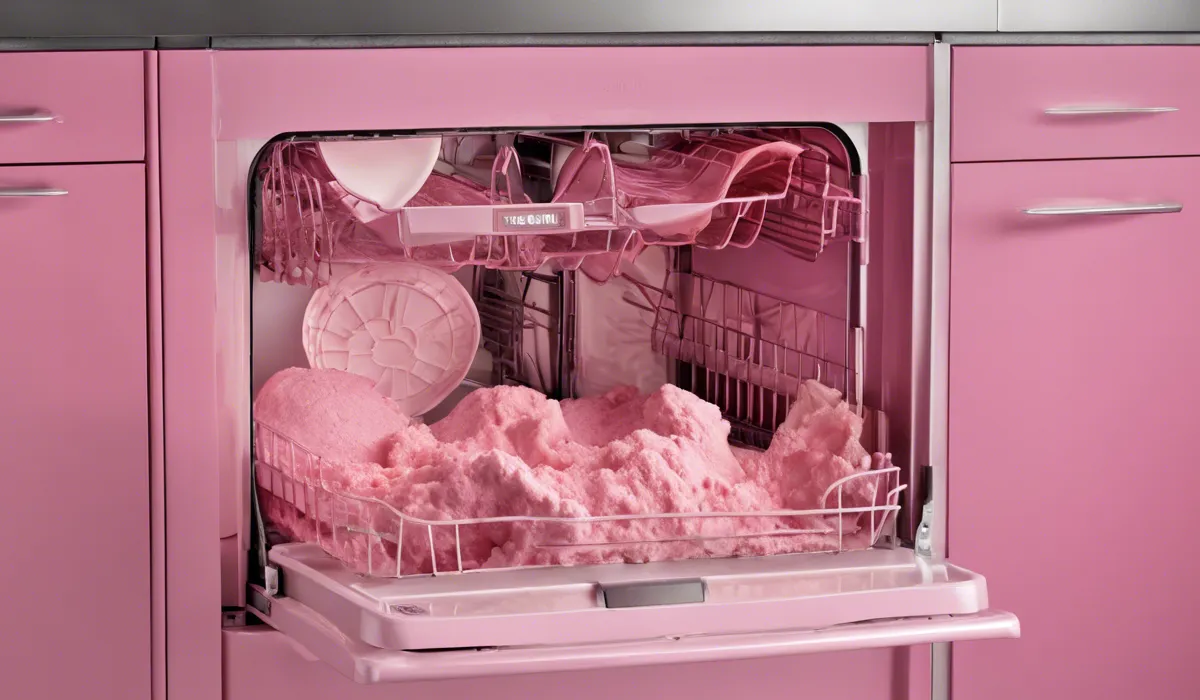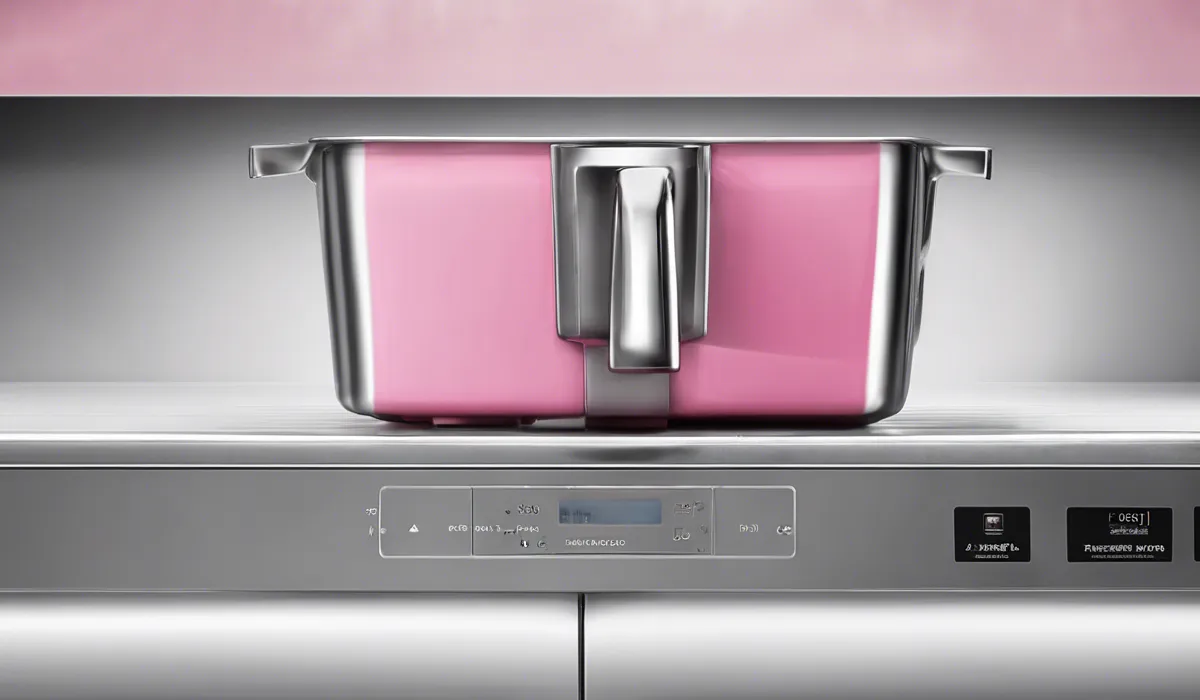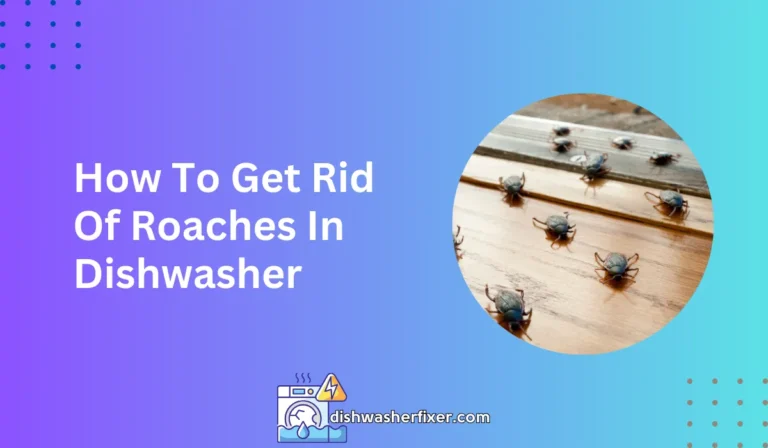How to Get Rid of Pink Mold in Dishwasher: Quick Fixes!
To eliminate pink mold in your dishwasher, mix equal parts water and vinegar, apply the solution to the affected areas, scrub gently with a soft brush, and run a hot cycle with the mixture. Afterwards, leave the door open to dry.
Identification and Understanding Pink Mold

What Is Pink Mold?
Pink mold is a common name for a type of bacteria known as Serratia marcescens. This bacteria produces a pinkish or reddish film, often referred to as pink slime or biofilm.
It thrives in moist environments, making your dishwasher an ideal habitat. Unlike true molds, which are fungi, pink mold is a bacterial growth.
Pink Mold vs. Other Molds
While pink mold is a bacteria, other molds you find in homes are fungi. They come in various colors, like black or green, and have spores that can spread through the air.
Pink mold, on the other hand, spreads through direct contact with water or surfaces. Knowing the difference is vital for proper cleaning and prevention methods.
Causes of Pink Mold in Dishwashers
Pink mold appears in dishwashers due to lingering moisture and leftover food particles.
These create an environment where bacteria can grow. Regular use of the dishwasher does not always prevent pink mold because the hot and damp conditions inside the dishwasher after a cycle can promote bacterial growth.
Health Risks of Pink Mold
While not as dangerous as some molds, pink mold can still pose health risks, especially for those with weakened immune systems.
It can cause respiratory issues, infections, and other health concerns. It is important to address pink mold promptly to maintain a healthy home environment.
Preventive Measures

Regular Dishwasher Maintenance
Regularly cleaning your dishwasher is crucial. Wipe down the interior surfaces with a cloth, remove and rinse the filter, and check for food debris. This helps prevent not only pink mold but also other issues that can affect your dishwasher’s performance.
Proper Ventilation and Dryness
To deter mold growth, ensure your dishwasher can ventilate properly after each use. Leave the door ajar to allow moisture to evaporate. Additionally, wipe down any excess water after cycles to keep the interior dry.
Choosing the Right Detergents and Rinse Agents
Using the right detergents and rinse agents can help prevent pink mold. Some products have mold-inhibiting ingredients. Always follow the manufacturer’s recommendations for the types and amounts of cleaning agents to use.
Loading Dishes for Improved Airflow
Load dishes so that water can circulate freely. This helps ensure cleaner dishes and prevents water from stagnating, which can lead to mold growth. Avoid overcrowding and arrange items with enough space between them.
Removal Process

Emptying Your Dishwasher
Before you start cleaning, remove all dishes and dishwasher racks. This allows you to access every part of the dishwasher that needs cleaning. Check for any food particles or debris and dispose of them.
Preparing the Cleaning Solution
Mix equal parts of water and vinegar to create an effective cleaning solution. This natural solution can help break down the biofilm without using harsh chemicals. For tougher mold, you can make a paste with baking soda and water to use as a scrub.
Cleaning Dishwasher Parts
Use a soft brush to gently scrub the spray arms, filters, and seals. Pay special attention to the corners and crevices where pink mold likes to hide. If parts are removable, you may soak them in the vinegar solution for a more thorough clean.
Running a Cleaning Cycle
After manually cleaning, run a hot cycle with the vinegar solution or a dishwasher-safe mold remover. The high temperature and cleaning agent will help sanitize and eliminate any remaining pink mold.
Post-Cleaning Measures
Once the cycle is complete and the dishwasher is clean, keep the door open to dry out the interior completely.
Check regularly for signs of pink mold and repeat the cleaning process if needed. Consistent monitoring and maintenance are key to preventing mold recurrence.
Seeking Professional Help
If you’ve tried these steps and the pink mold persists, it may be time to seek professional help. A professional can assess your dishwasher and provide a more intensive cleaning or suggest repairs to prevent future mold growth.
FAQs About Getting Rid of Pink Mold in Dishwasher
What is the best homemade solution for removing pink mold from a dishwasher?
A vinegar solution is the best homemade solution for removing pink mold from a dishwasher.
How can I apply the vinegar solution to the affected areas in my dishwasher?
Apply the vinegar solution by spraying it directly on the affected areas.
What type of brush should I use to scrub pink mold in my dishwasher?
Use a soft-bristle brush to scrub pink mold in your dishwasher.
Is it necessary to run a hot cycle after cleaning the dishwasher with the vinegar solution?
Yes, it is necessary to run a hot cycle after cleaning with the vinegar solution.
Why is it important to leave the dishwasher door open after removing pink mold?
Leaving the dishwasher door open helps to prevent mold by allowing it to dry completely.
Final Thoughts
Eliminating pink mold in your dishwasher involves a simple yet effective process. Create a solution of equal parts water and vinegar, apply it to the moldy spots, and scrub with a soft brush.
Then, run a hot wash cycle with this mixture. To complete the process, let your dishwasher air dry by leaving the door open.





